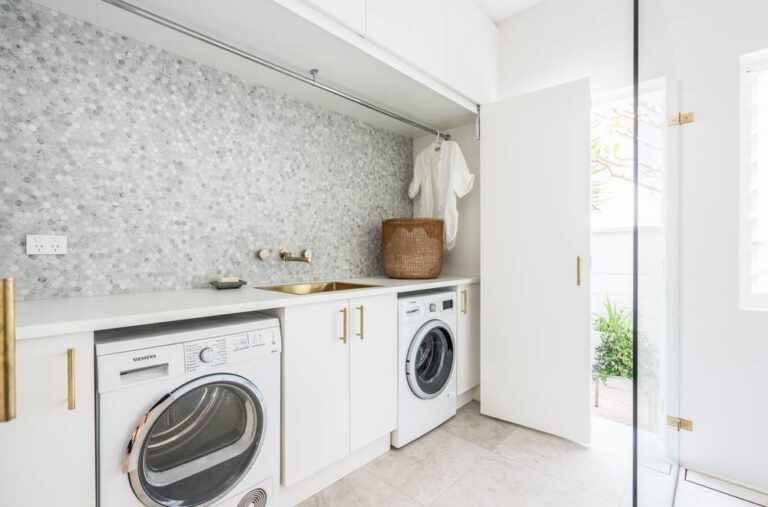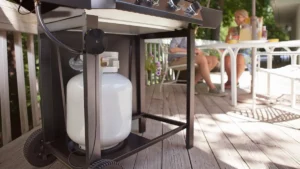The roof is one crucial component to be considered for the upkeep of the house. Weather damage, along with aging and outside damage, ultimately weakens the roof and puts one at the crossroads of roof replacement and re-roofing. But which option is more cost-effective in the long run?
Understanding the differences between roof replacement and re-roofing helps homeowners make informed decisions based on budget and durability. For all of that, this article will take a look at either choice, its expenses, benefits, and elements influencing its viability.
What is Roof Replacement?
A roof replacement means complete removal of the existing roofing system down to the deck, and a new roofing system is installed. This procedure involves removing old shingles, underlayment and, if necessary, more extensive structural components such as the roof deck. It prevents hidden problems like rot, mould, or water damage from getting in behind new materials when they’re installed.
New construction includes durable materials such as asphalt, metal, tile, or slate, which improve longevity and energy efficiency. Rated higher than re-roofing, though more pricey, it protects better and provides better home value, which prevents ongoing repairs while being a smart, long-lasting investment.
Pros of Roof Replacement
- Longevity: A new roof can last 20-50 years depending on materials to bring you long-term peace of mind.
- Structural Integrity: Not only is the roof deck checked and repaired; any possible issues relating to rot or leaks will be dealt with so that damage to the structure does not occur.
- Increased Property Value: A complete roof replacement adds curb appeal and increases value so that the property becomes more attractive to would-be buyers.
- Better Warranty: Roof replacements usually come with full warranties that protect materials and labour, providing you with more security.
- Improved Energy Efficiency: Modern roofing materials offer superior insulation allowing for temperature regulation within the home and leading to savings on energy bills.
Cons of Roof Replacement
- Higher Cost: Roof replacement is one of the most costly roofing options because of the labour, materials and time needed.
- Longer Installation Time: Based on the size and complexity of the roof, the process may take a few days to a couple of weeks to complete.
- More Labour-Intensive: Must engage skilled professionals and a lengthy timeline, driving up overall costs.
What is Re-Roofing?
Re-roofing involves laying a new layer of shingles over an existing roof without stripping off the old material. It is a cheaper and more efficient option than a complete roof replacement. On the other hand, re-roofing is possible only when the existing roof is in relatively good shape, without any significant structural damage, or other issues underneath like extensive water damage, moth, or rot.
This works to prolong the life of a roof with only the least disturbance to its structural integrity. Re-roofing is one of the most widely applied choices among homeowners since it is quite affordable and does not put in so much manual effort as doing a complete tear-off.
Replacement of their roof provides an aesthetically appealing addition and also addresses any functional issues.
Pros of Re-Roofing
Some of the key benefits include:
- Lower Cost: Since it requires fewer materials and labour to install, it’s a budget-friendly option.
- Faster Process: This can sometimes be completed within a day or two, therefore creating less disruption to homeowners.
- Less Disruption: Since no existing shingles need to be removed, less debris and mess are created through installation.
- Improved Aesthetic Appeal: Offers a new look at a fraction of the price of a total roof replacement.
Cons of Re-Roofing
- Shorter Lifespan: Because the old materials are left in place, the durability is lower than a complete replacement of the roof.
- Not Suitable for All Roofs: If the base roof frame is damaged, re-roofing can’t be done and can worsen problems.
- Limited Warranty: Warranties tend to be shorter, having minor coverage and not covering a lot, given that the underlying structure remains the same.
Cost Comparison: Roof Replacement vs. Re-Roofing
Before fixing or upgrading the roof, homeowners may have to choose between roof replacement and re-roofing. Although in the short term re-roofing may be less costly than replacement, in the long run, roof replacement is durable and cost-effective.
Upfront Costs
Roof Replacement: This entails replacing an entire roof which includes tearing off old shingles, that includes inspecting the underlying structure and replacing it with a new roof. Prices can range anywhere from $5,000 to over $15,000 depending on materials and labour. This is costly but removes structural problems, and guarantees long-term durability.
Re-Roofing: This adds a new layer of shingles on top of the old which is a cost-effective option that ranges from $3,000 up to $10,000. But it doesn’t cover hidden damage, which could lead to future repairs.
Long-Term Costs
Roof Replacement: New roofs last 20 to 50 years which require little maintenance, and eliminate expensive repairs. All structural issues are remedied meaning long-term costs are lower.
Re-Roofing: Although it can prolong a roof’s life by 10 to 20 years, re-roofing may mean higher repair costs later on, especially if any underlying issues go unaddressed.
Energy Efficiency
Roof Replacement: Permits you to use modern energy-efficient materials on your roof and better insulation to prevent heat absorption and cut energy bills.
Re-Roofing: New shingles can add some unwanted insulation, but that won’t improve the underlying structure and thus is not as energy-efficient.
Which is More Cost-Effective?
- Choose Roof Replacement for longevity, low upkeep, and high energy efficiency!
- Choose Re-Roofing as a temporary, cost-effective solution, with possible future repairs.
Re-roofing may save money now, but roof replacement is a better investment for performance and long-term cost savings.
Additional Factors to Consider When Choosing Between Roof Replacement and Re-Roofing
1. Roof Inspection
Before making this decision, it is important to have a professional inspect the roof. Your roof might appear fine externally but underlying problems such as leaks, water damage, mould, or degraded structural components may prevent re-roofing from being a viable option. Before choosing the best choice, a thorough examination will address and resolve any underlying concerns of the prospect.
2. Future Home Plans
Your decision should depend on your long-term plans for owning a home. Re-roofing is an improvement that is going to pay off quickly if you plan to sell your home in a few years — it is a stress-free and inexpensive way to have an impact on curb appeal and market value. But if you plan to live in the home long-term, investing in a complete roof replacement is the better option. It is universal, resistant to regular repairs, and in the end, is less expensive because they do not have to face the cost of repeated maintenance.
3. Insurance Considerations
Not to mention home insurance policies usually provide more favorable coverage for fully replaced roofs versus re-roofed ones. Some insurers see re-roofing as a short-term solution and may limit coverage or increase premiums. Reviewing your insurance policy ahead of time can help you find out whether one option will save you more money in the long run. You may also qualify for discounts with a fully replaced roof, which would make it a more appealing option from an insurance perspective.
4. Environmental Impact
A complete roof replacement creates more rubbish, as the previous roof must be removed and appropriately disposed of. Instead, using recyclable or sustainable materials such as metal, which can be recycled after its life, solar shingles, or reflective roofing can help lessen your impact on the planet. Also, selecting a contractor who disposes of or recycles responsibly can help make a complete replacement the greener option.
Is Roof Replacement More Cost-Effective in the Long Run?
Yes, over the long haul, roof replacement makes more economic sense on several fronts. Though it may appear more affordable in the short term, re-roofing does little to address problems and relies upon, underlying structural issues that may increase the need for repairs over the years. Depending on the materials used, the newly installed roof could last anywhere from 20 to 50 years, this means enhanced durability and lesser maintenance issues.
The added longevity means that when the roof needs replacing, it will increase the value of the home, better insulation and reduced expenses for heating and cooling which adds more value to the property, and better protection from the elements ensuring long-term peace of mind.
If you have a relatively new roof, still in good structural condition, and has only minor problems, re-roofing can act as a stop-gap measure. But, if your roof is aged, badly damaged, or has other deterioration, a complete replacement is the best long-term investment that will make it reliable in terms of durability, fewer repairs, and overall costs.
FAQs
1. What is the main difference between roof replacement and re-roofing?
Replacement means the old roof is removed fully, and a new one is installed. Re-roofing means a new layer of shingles over the existing roof without ripping off the old materials.
2. How much does roof replacement cost in Australia?
Roof replacement prices in Australia depend on materials, roof size, and labour but generally fall between $5,000-$25,000.
3. How long does re-roofing last compared to a full roof replacement?
A re-roofing can typically last anywhere from 10–20 years, while a full replacement can last a bit longer that is 20-50 years, depending on the materials used.
4. Can all roofs be re-roofed?
No, not at all. Re-roofing is only an option if the existing roof is in decent shape without significant structural damage, leaks or multiple layers of shingles.
5. Which option is better for increasing home value?
As roof replacements promote structural integrity, longevity and aesthetics, they add more equity into a home as opposed to re-roofing.
Conclusion
The choice of a roof replacement or re-roofing will depend on your budget, long-term plans, and the condition of your existing roof. It may seem that applying a new roof is the cheap way out in the short term, but a full roof replacement is a lot more durable, requires fewer repairs in the future, and provides a higher return on your roofing investment.
If you are unsure which option is right for your home, schedule an inspection and recommendation with a professional roofer. A smart investment today can mean no headaches tomorrow and that means less money spent too.















